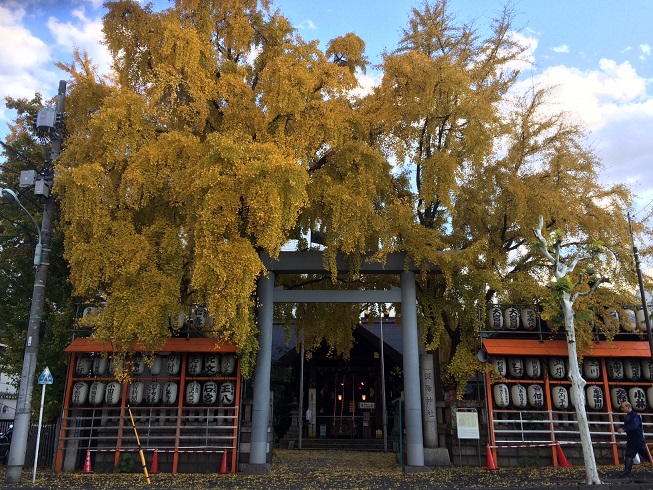Tokyo bike tours guide
Namiyoke Inari Shrine
It is said that Namiyoke Inari Shrine was built during the Manji era (1658 to 1661). During the years in the Manji era when land in the entire Tsukiji area was reclaimed, The work ran into difficulties due to waves. It is said, however, that after an image of Inari Myojin was floated on the sea as worship, the land reclamation work was safely completed. The honorific title of “Namiyoke(protection from waves)” came from this historical event. Since the Edo period. Many lion heads paraded the town during the festival. Although most of the lion’s heads were lost due to earthquakes and damage during the war. A pair of remaining lion’s heads-made in 1848(cultural properties of Chuo-ku{ward}) is enshrined at the main shrine as treasures.
During the “Tsukiji Shishi Matsuri Festival” held every June, “Yakuyoke-tenjo-ooishi(Lion charm against bad luck)” and “Benzaiten-ohaguro-jishi(Saraswati lion with black – painted teeth)” occasionally parade through the town to preserve the tradition of the Shishi Matsuri.
Moreover, two rainwater bowls (cultural properties of Chuo-ku[ward]) in front of the main shrine were dedicated in 1838 by conveyors who were engaged in discharging cargo from ships of the Owari domain. During the Edo period, there was a warehouse of the Owari Tokugawa clan in the southern half of Tsukiji market to which rice and local specialities of Owari were brought. The rainwater bowls, which were dedicated for praying for the safety of ships, are valuable cultural properties that preserve the people’s faith in Namiyoke Inari Shrine.
Now you can see beautiful Gingko tree’s leaves at Namiyoke shrine!
We visit here in our Tokyo Bay Side Bike Tour.

